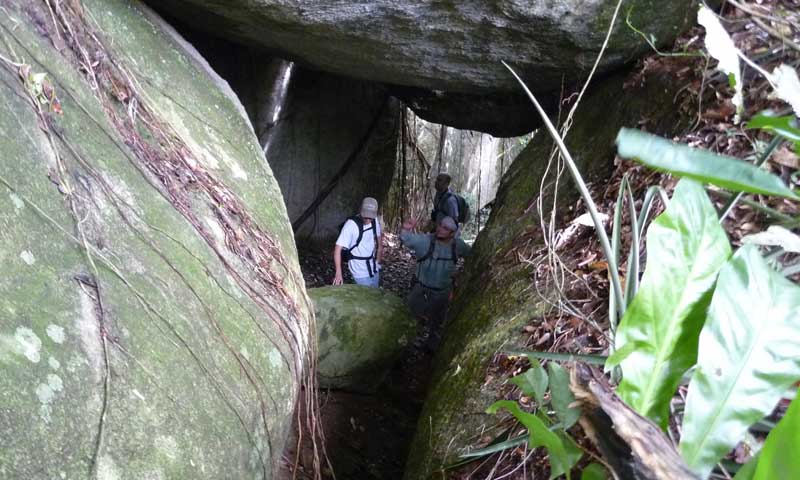The Sierra Pandura Natural Protected Area (SPNPA) is located in Puerto Rico’s Eastern Region, along the Pandura Mountain Range. It is part of the San Lorenzo batholith, a composite body of volcanic origin occupying an area of about 193 mi2 (500 km2) that bifurcates into the Pandura ridge (also known as Cuchilla de Pandura and La Pica) and the Guardarraya ridge (Sierra Guadarraya) in southeastern Puerto Rico.
The area is particularly important due to presence of the rare and endemic Puerto Rico Rock Frog (Eleutherodactylus cooki), locally known as the coquí guajón, a critical element listed as a vulnerable species by the Department of Natural and Environmental Resources (DNER), as a threatened species by the United States Fish and Wildlife Service (USFWS), and more recently, as a vulnerable species under the International Union for the Conservation of Nature’s Red List. One of 16 species of coquí frogs known in Puerto Rico—three of which are probably extinct today, while all are believed to be rare or declining—the guajónwas first collected by American herpetologist Chapman Grant in 1932.
Nicknamed the “demon of Puerto Rico” because of its eerie call and phantom-like appearance, the species has a very limited range, mostly confined to the southeastern region of the Island, where it inhabits small caves, crevices, and grottoes formed by large boulders of granitic, plutonic, and sedimentary rock, known as guajonales (hence its name).
The habitat of this species is naturally fragmented and the majority of the known populations are on private lands in southeastern Puerto Rico, where increased levels of land development threaten to further reduce and fragment its habitat, distribution, and survival. Of all endemic species of coquí frogs in Puerto Rico, the guajón’s habitats have remained unprotected for the longest period of time.
On September 24, 2004, the USFWS published a recovery plan for the species that designates a critical habitat of approximately 260.6 acres within several nearby municipalities. Due to the species’ restricted distribution, specialized habitat use and the threats it faces; the Conservation Trust of Puerto Rico is committed to permanently protecting traditional, non-traditional and unoccupied guajón habitats and corridors between existing populations.
The three parcels integrating the 174.03 acres of the SPNPA are the first private land purchases focused in the guajon’s habitat protection, thus representing an important contribution to the conservation of this threatened species.

